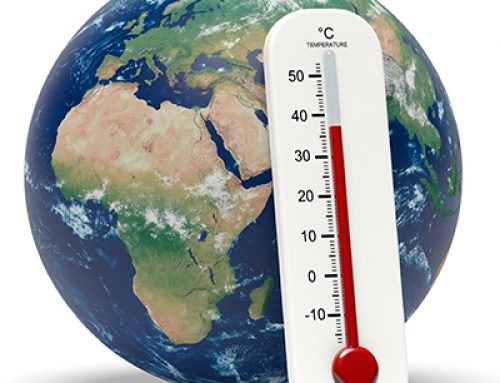TEMPERATURE.
Temperature is one of the constituent elements of the climate that refers to the degree of specific heat of the air in a given place and time, as well as the temporal and spatial evolution of said element in the different climatic zones.
It constitutes the most important meteorological element in the delimitation of most of the climatic types. For example, when referring to macrothermal climates (that is, high temperatures; A climates in the Koppen classification), mesothermal (temperate climates or C climates in the Koppen classification) and microthermal (cold climates or E climates) we are doing atmospheric temperature one of the main criteria to characterize the climate.
TEMPERATURE MEASUREMENT
Temperature values, to be valid, must be scientifically comparable. The most commonly used instrument for measuring temperature is the mercury thermometer, which basically consists of a small amount of mercury stored in a container with a graduated scale. Matter generally increases its volume or expands when heated, and this phenomenon occurs with mercury. The scale is then used to measure temperature variations using the volume variations of mercury.
Currently, the mercury thermometer is not only used for measurement. There are several types of thermometers, and their structure and operation varies according to their intended use. There is also the gas thermometer, liquid crystal thermometers, bimetallic thermometers, thermocouples, among others.
There are several measurement scales (Centigrade or Celsius, Fahrenheit and absolute) and in all of them the melting points of pure ice and the boiling point of pure water, at sea level, were chosen as reference values.
SOURCE OF TEMPERATURE
Solar radiation is the main and practically the only source of energy for the atmosphere of our planet. This solar radiation arrives in the form of insolation: rays of light and heat of different wavelengths that make up the visible spectrum (light rays) and those with shorter wavelengths that are not visible (ultraviolet rays) and longer wavelengths (infrared rays). , which are also not visible). Thus, the visible spectrum is in the middle of the spectrum constituted by the solar radiation that reaches our planet, and more specifically, the Earth’s atmosphere.
Solar radiation passes through the atmosphere without heating it, because the air is diathermic, that is, it allows the sun’s rays to pass through without heating it. But this solar radiation, upon reaching the land or sea surface, is transformed by increasing its wavelength and can heat both the waters and the soil and the lower layers of the air. Thus, this heating of the earth’s atmosphere is not direct but indirect through from the longer wavelength infrared rays that are re-emitted by the hot earth’s surface.
The heating in the lower layers of the air is due to two closely related phenomena:
a) The higher atmospheric pressure of the air at low altitude. This fact derives from the fact that air is compressible, that is, it can be compressed by its own weight. And compressed air at low altitudes can absorb much more heat than expanded air at high levels.
b) The limited range of the waves reflected by the earth’s surface: these waves are of infrared radiation (long wave) and lose their thermal energy very quickly after being emitted. That is why the mirage phenomenon occurs, in which the air in contact with the ground heats up a lot and when its density decreases, it produces a kind of mirror that refracts sunlight, so that on a dry day it can see the surface of the roads as if they were wet (and virtual lakes in the desert sands).
SPATIAL AND TEMPORAL VARIATION OF TEMPERATURE
The variation can be diurnal, seasonal, by latitude or altitude.
The diurnal, is defined as the change in temperature between day and night, produced by the rotation of the Earth. During the day, solar radiation is generally greater than the terrestrial, therefore the Earth’s surface becomes hotter. During the night, in the absence of solar radiation, only terrestrial radiation acts, and consequently, the surface cools. This cooling continues until sunrise. Therefore the minimum temperature generally occurs shortly before sunrise.
The seasonal one, is due to the inclination of the terrestrial axis and the translational movement of the Earth around the sun. The angle of incidence of the sun’s rays varies, seasonally, differently for the two hemispheres. The northern hemisphere is warmest in June, July, and August, while the southern hemisphere receives more solar energy in December, January, and February.
By latitude, the greater inclination of the sun’s rays at high latitudes causes them to deliver less solar energy over these regions, such delivery being minimal at the poles. While on the Equator the solar rays arrive perpendicular, being the maximum energy delivery there.
By altitude, in the so-called troposphere, the temperature decreases with altitude. This decrease is defined as Vertical Temperature Gradient and is on average 6.5 degrees Celsius / 1000 meters. However, it often happens that there is an increase in temperature with altitude: Temperature inversion. During the night the Earth radiates (loses heat) and cools much faster than the surrounding air; then, the air in contact with it will be colder while the temperature above it will be higher. Other times it is due to the entry of hot air in certain layers due to the presence of some frontal zone.





